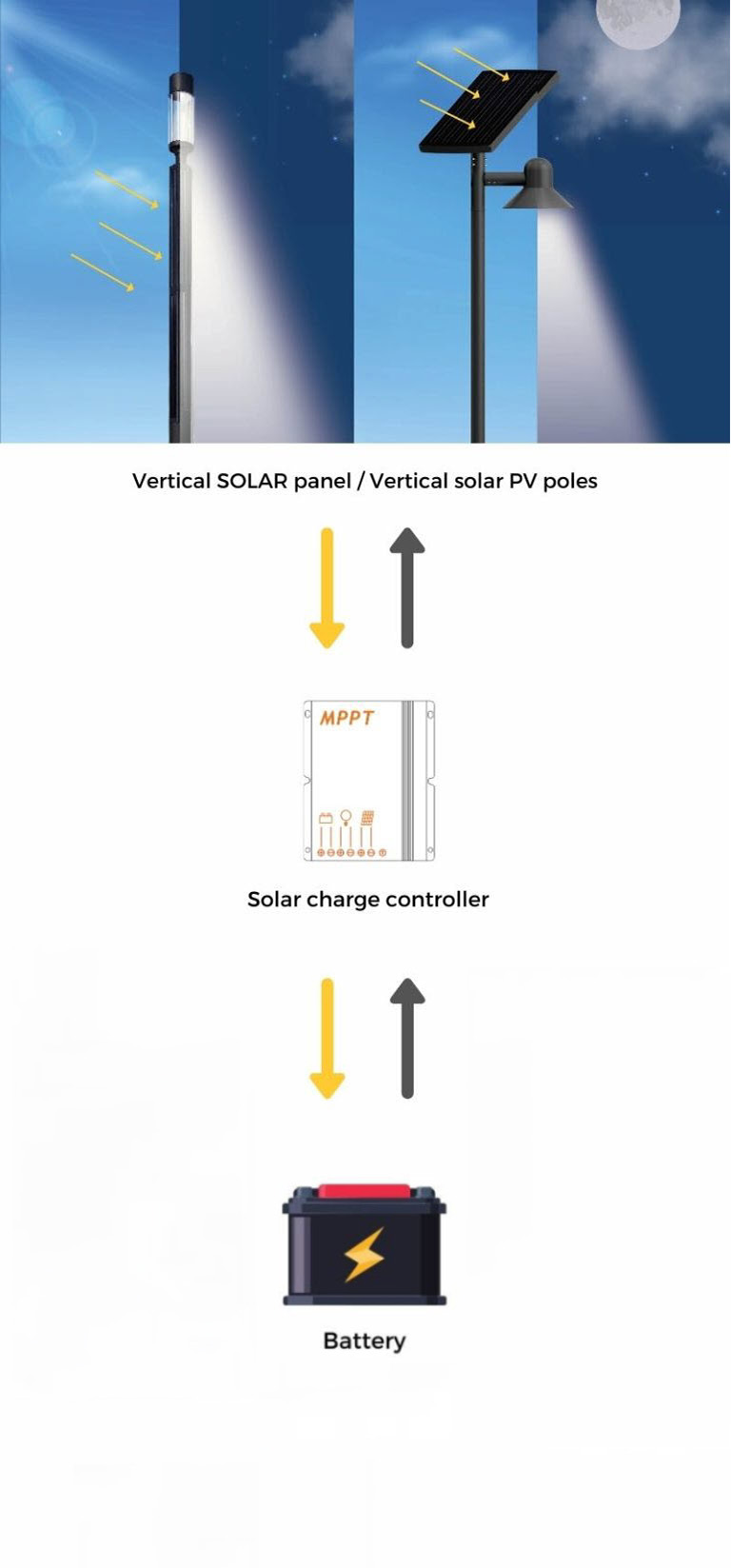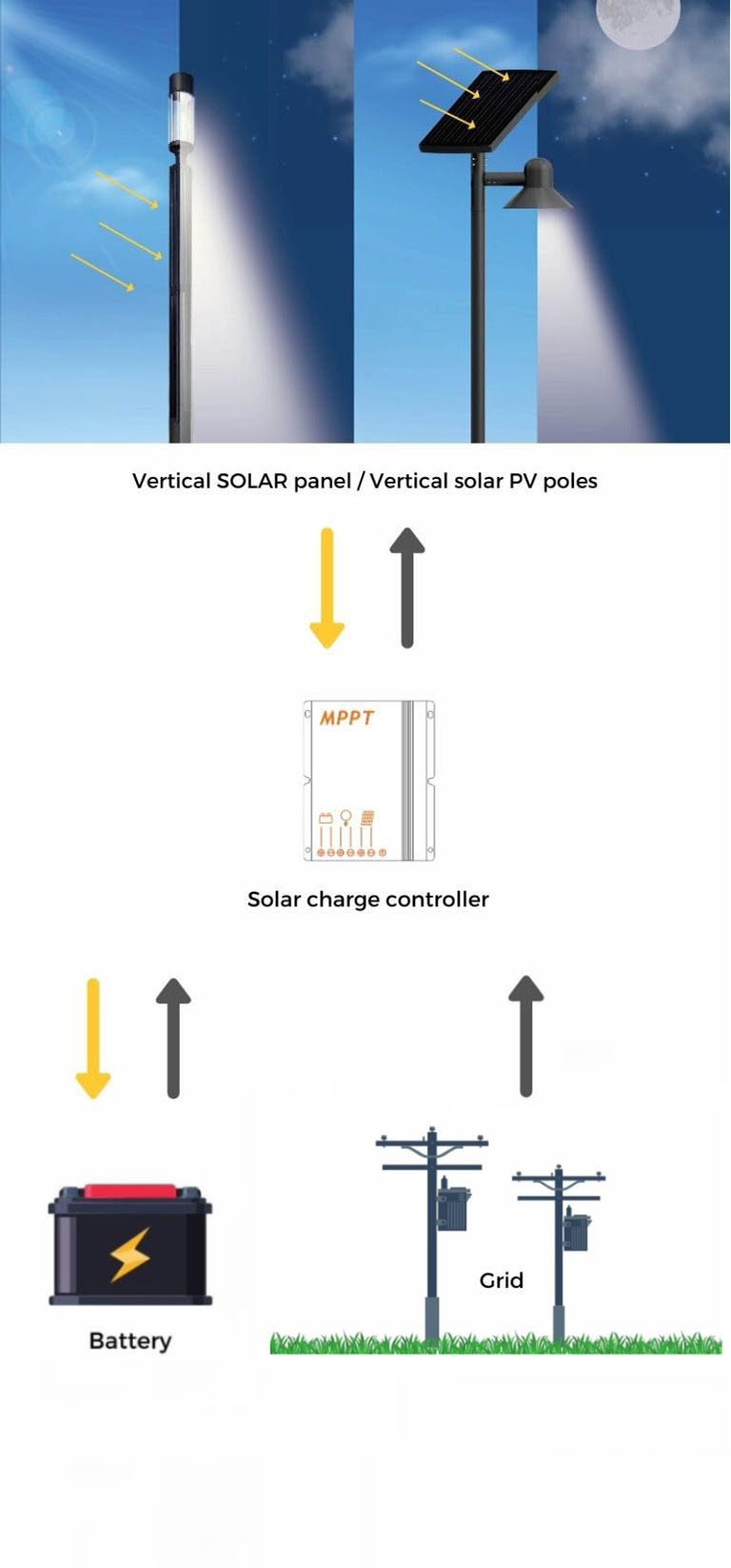When implementing a solar lighting system, an important consideration to make is whether it will be an Hybrid or off-grid solution. The key difference between the two is that an Hybrid system is connected to the local utility network, often referred to as grid-tied, and the off-grid solution is stand alone.
LIGMAN Solar Lighting Systems are provided as standard with an off-grid system. Independent of the local power network, off-grid lighting is completely reliant on the electricity stored in its batteries that have been charged by solar energy.
Hybrid by comparison will always have access to electricity, irrespective of whether the batteries have a stored charge – unless of course the local network is down. The advantage being that if the system is not able to generate enough of its own electricity, it can draw supplementary energy from the grid, ensuring there will always be sufficient power for the lighting.
In the standard off-grid solution, the solar panels convert the suns energy into electricity which is stored in local batteries used to power the lighting at night. The Hybrid solution – if requested – requires additional hardware, specifically a charge controller which can accept input from both the solar panel and the local utility grid, By allowing the system to share energy, lights will use the main power from the battery & backup power from the grid in case the power from the battery is not enough.
The diagram below presents a simplified version of what is taking place. Essentially the Hybrid charge controller utilises a driver to convert the 220V grid input to 12/24V to connect the system for backup power supply. So in the event that the solar panels have not been able to generate enough electricity, leaving the battery with insufficient power for the lighting, it can draw the required energy from the electricity grid and in turn power the lights.
Off-grid
Hybrid


